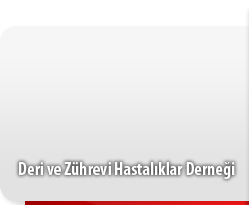The incidence of melanocytic naevi and dysplastic naevi in the patients with atopic dermatitisUlviye Atılganoğlu1, Özlem Su1, Nahide Onsun1Background and Design: Atopic dermatitis (AD) is a chronically, relapsing inflamatory skin disease which often starts in the first year of life. The pathogenesis of AD is still unknown but our knowledge of genetic, environmental, endogen, immunologic and pharmacologic factors contributes to the development of AD. Genetic factors, sunlight and UV light, hormones, and immunsupression display important roles in the development of melanocytic naevi. The purpose of this investigation was to point out the naevus profile in a group of patient with AD. Materials and Methods: Fifty-one patients with AD from our dermatology out-patient clinic included to the trial. AD was defined according to the criteria suggested by Hanifin and Rajka. The control group consisted of 50 subjects. These subjects were randomly selected from dermatology and pediactrics outpatient clinics of our hospital. All patients and controls were examined by the same doctor. The total body count of melanocytic naevi (MN), dysplastic naevi (DN) and skin type according to Fitzpatrick were noted. The results from study group compared with the control group. The patients with AD investigated for serum IgE and the relation between IgE and number of MN worked out. Results and Conclusion: The patients with AD had higher total body count of MN and DN compared with the control group, but diference in total body count of MN and DN between AD group and control group was not significant (p>0,05). There was also no correlation between total IgE and number MN in AD group. An altered immune response and inflammation in atopic skin, genetic factors and applied treatments may play role in the formation of MN. AD patients should be examined regulary for pigmented lesions because of their special immune status. Keywords: Atopic dermatitis, melanocytic naevi, dysplastic naevi.
Atopik dermatitli olgularda melanositik ve displastik nevüs sıklığıUlviye Atılganoğlu1, Özlem Su1, Nahide Onsun1SSK Vakıf Gureba Eğitim Hastanesi Deri ve Zührevi Hastalıklar Kliniği
Atopik dermatit (AD) sıklıkla yaşamın ilk yılında başlayan kronik, rekürren inflamatuar bir hastalıktır. Hastalığın patogenezi hala tam olarak bilinmemektedir. Ancak genetik, çevresel, endojen, immunolojk ve farmakolojik faktörler AD gelişimine katkıda bulunmaktadır. Melanositik nevüs gelişiminde genetik faktörler, güneş ve UV ışığı, hormonlar ve immunsupresyon önemli bir rol oynamaktadır. Bu çalışmanın amacı bir grup AD' li hastada nevüs profilini araştırmaktı. Hanifin ve rajka kriterlerine göre AD tanısı alan 51 hasta çalışmaya alındı. kontrol grubunu oluşturan 50 olgu rastlantısal olarak dermatoloji ve pediatri polikliniklerinden seçildi. Tüm hastalar ve kontrol grubundaki olgular aynı doktor tarafından muayene edildi. hasta ve kontrol grubundaki olguların total vücut melanositik nevüs sayıları, displastik nevüs sayıları ve Fitzpatrik deri tipleri kaydedildi. Çalışma grubunun sonuçları kontrol grubuyla karşılaştırıldı. AD' li hastalarda kontrol grubuyla karşılaştırıldığında total vücut melanositik nevüs sayısı daha yüksekti. Ancak fark istatistiksel olarak anlamlı değildi. Atopik deride değişmiş immün yanıt ve inflamasyon, genetik faktörler ve uygulanan tedaviler melanositik nevüs gelişiminde rol oynayabilir. Özel immün durumlarından dolayı AD' li hastalar pigmente lezyonlar açısından düzenli olarak muayene edilmelidirler. Anahtar Kelimeler: Atopik dermatit, melanositik nevüs, displastik nevüs
Ulviye Atılganoğlu, Özlem Su, Nahide Onsun. The incidence of melanocytic naevi and dysplastic naevi in the patients with atopic dermatitis. Turkderm-Turk Arch Dermatol Venereol. 2002; 36(4): 268-270 |
|



